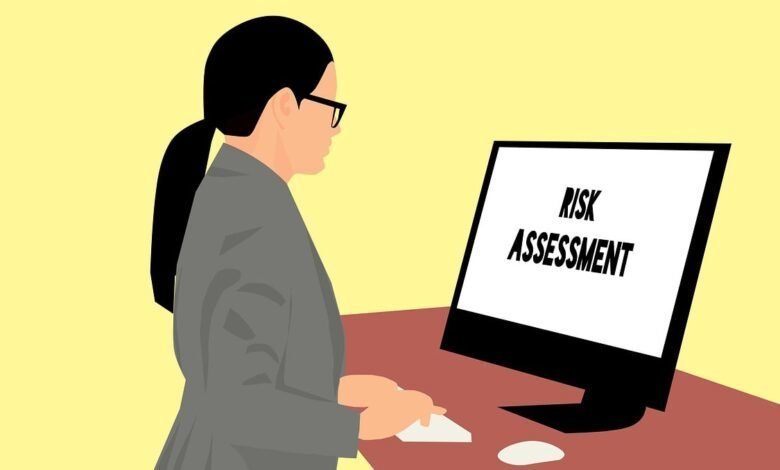A Beginners Guide to Risk Assessments

Conducting a risk assessment is crucial to the health of any business. Assessments allow a business to save a fortune on fixing preventable problems or recovering a reputation that could’ve been saved.
However, most businesses don’t put many resources into risk management, if at all. On top of this, not many employees know much about risk assessment or the importance of risk management. This lack of knowledge can cause great damage to a business, should a risk become reality.
A good way for a business to begin the risk management process is to learn what a risk assessment is. An assessment helps a business to understand what risks it’s currently at risk of, as well as allow a team to put together a plan on how to address the risks.
The guide below can help businesses understand what a risk assessment is, and how important it is in keeping a business safe.
What is a Risk Assessment?
A risk assessment is an assessment that a team of employees conduct to see what risks their company is liable to fall victim to. These assessments should be as comprehensive as possible, with employees recognizing the company’s risk of financial loss, reputational damage, and other damages that can harm the business.
A risk assessment requires an assessment team to do a thorough analysis of the company’s vendors, clients, contractors and any other third parties that have the potential to cause any type of damage to the company. Ideally, an assessment team would use a guide to help with their assessment and create a risk register. Conversely, many companies also make use of vendor risk management software to do the heavy lifting of a risk assessment.
Both types of assessments should give a company a register or directory that the company can consistently refer to monitor risks.
Who Needs a Risk Assessment?
All businesses, across all industries, should conduct some type of risk assessment. All businesses are in danger of falling victim to one risk or another. While larger corporations may have more risks to worry about, even small organizations should also look at what risks they should keep their eye on.
It’s especially important for a company to conduct their first risk assessment once third parties become more involved in the company’s activities. This can include long-term clients, vendors, long-term contractors, and other parties that the company depends on.
What are Some Types of Risks?
It’s important that a company is aware that there are multiple categories that risks can fall into. There is no one single type of risk that a company should focus on – all risks should be treated with equal importance.
Financial Risks
Financial risks are one type of risk that businesses of all sizes should keep a close eye on. Financial risks are any and all risks that can affect a business’s bottom line, whether that be lost income or unnecessary expenses.
An assessment should include a close look at a company’s vendors, long-term clients and other parties that affect cash flow.
Financial risks are especially important for a company to monitor, as large sums of money can be saved – should a potentially expensive risk be recognized and resolved before the risk turns into a real threat.
Reputation Risks
As the name implies, reputation risks are risks that affect a company’s reputation. Being aware of a company’s risks to its reputation is crucial for client acquisition and client retention. A poor reputation can cause a business to lose clients and struggle with enticing new clients into working with them.
Looking at a company’s contractors is a good place for a risk assessment team to start when it comes to weighing reputation risks. If social media is being outsourced to third-party managers, for example, a company’s reputation could be at a high risk if the contractor is new to social media management, or has never worked with a company of that size before.
Cybersecurity Risks
Cybersecurity risks are another type of risk that many businesses should keep a lookout for. These types of risks are typically related to data leaks and malware infection. Cybersecurity risks can be extra devastating to a company, as any cybersecurity risks can not only harm employees of a company, but clients and third parties who work with them.
These risks, should they become reality, can cause serious damage to a company’s bottom line and reputation, as money and resources must be spent fixing the problem. In addition, people may be hesitant to work with the company in the future due to fears of falling victim to another cybersecurity vulnerability.
YOU MIGHT ALSO LIKE: How to Protect Your Small Business from Cyber Threats
What to do After Risks Have Been Identified
When a risk assessment team has identified all relevant risks to a company, a risk register should be used to monitor and resolve risks.
The register should be built as the risk assessment is being conducted and serve as a way for an assessment team to keep track of all recognized risks that were identified during the assessment. These registers should contain information on the risk, what’s causing it, how it can damage the business, and the likelihood of it becoming a real threat. If a team does not want to create a register, there are several risk management programs that can be used to help create a directory.
Whether register or directory, the information uncovered during the risk assessment should be given to supervisors, so that the proper departments can be notified of what risks they should work toward resolving. Lower-priority risks can simply be monitored, and only acted upon when they seem to be getting worse.
A risk assessment can be a daunting task at first glance. However, once a business has a firm understanding of what a risk assessment is and how beneficial it can be to the company, a team can be assembled to carry out the assessment. A risk assessment can ultimately save a company money, time, resources and even prevent client loss and reputation damage. It is important that companies of all sizes adopt this practice.






